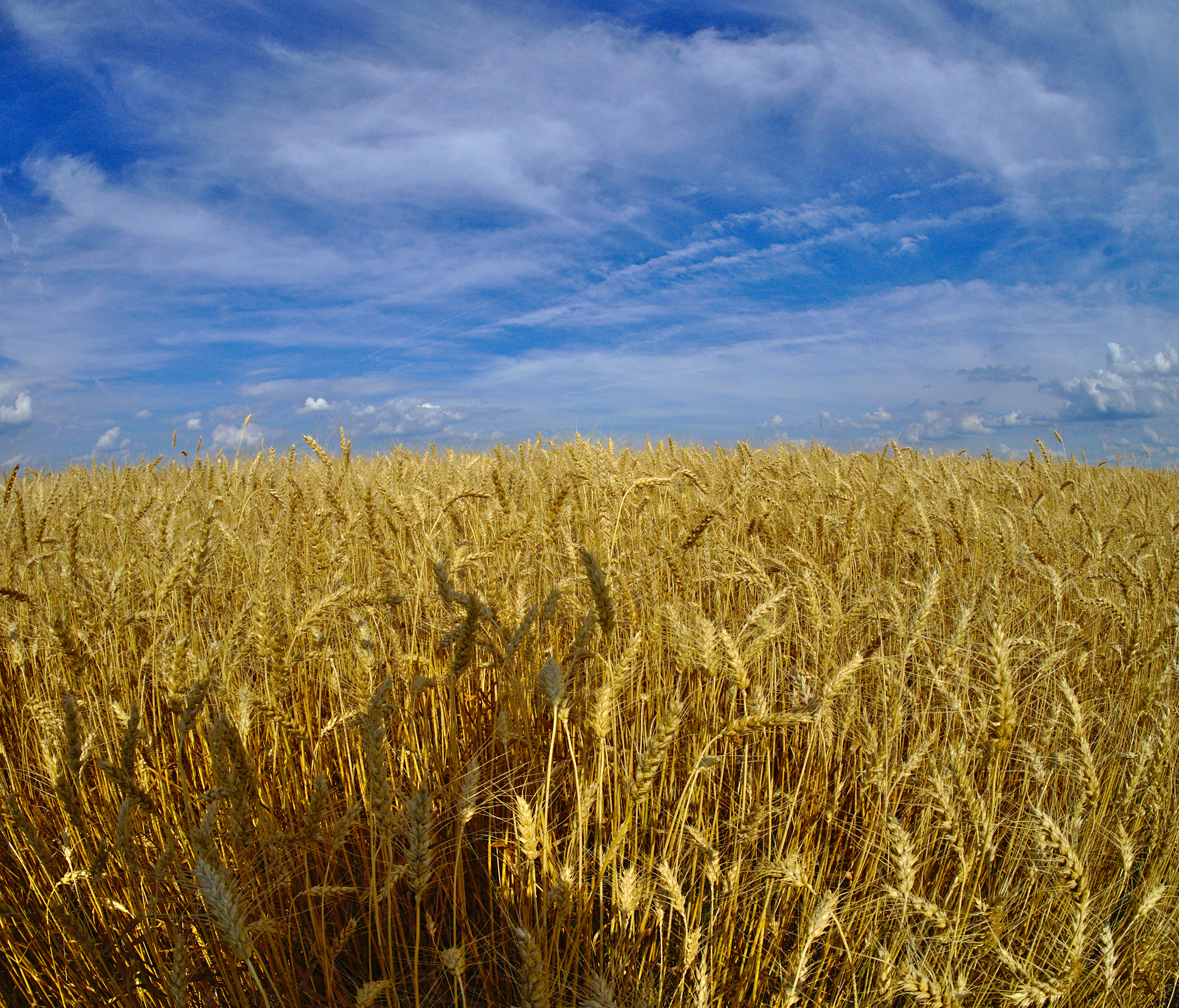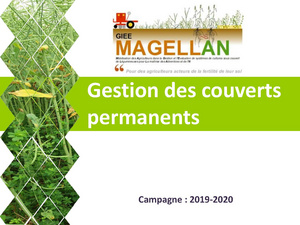Permanent cover for arable crops
 How to choose and maintain a permanent cover...
How to choose and maintain a permanent cover...

A permanent cover crop, also known as an indeterminate cover crop, a living cover crop or a living mulch crop, is different from a permanent cover crop where the cover crop is destroyed to make way for the cash crop. Here, the cover crop will cohabit with the cash crop from sowing to harvesting and will remain present during the intercropping period.
This long growth period means that their agronomic benefits can be exploited to the full : soil structuring, erosion control, stimulation of biological activity, carbon sequestration, symbioticnitrogen fixation in the case of legumes, limiting weed growth, etc.
Principle
The cover crop is left in place all year round, but it needs to be regulated when the cash crop is planted to prevent it from taking over the crop and causing losses in yield or quality. Once harvested, the cover crop, already in place, will provide optimum protection for the soil, as it will never be bare.
The cycle of a permanent cover crop
It is divided into three periods :
- Its birth in the cradle of a crop. As perennial legumes take a long time to become established, they can be planted under a crop that needs to be managed appropriately. This is often the case for weed control programmes : they need to be selective for the cover, sometimes restricting the possibilities for controlling the flora, particularly if the latter is complex. Various crops can be used to establish a cover crop : oilseed rape, forage maize, sunflower, straw cereals, forage meslin, etc. Summer planting is also possible, with preference given to previous crops such as winterbarley, which free up the land early.
- Its peak during intercropping. During the intercropping period, the cover crop already established can develop very strongly a few days after the crop has been harvested, thanks to the renewed access to light. The intercropping period, at least during the summer and early autumn, is favourable to the growth of the cover crop : soil structuring, nitrogen and carbon fixation, soil cover limiting the development of weeds, production of biomass that can be recycled as fodder or by methanisation, etc. A permanent cover crop, already established when the cash crop is harvested, develops more rapidly during intercropping than an intermediate crop subject to the difficulties of summer establishment (dry conditions, seedbed cluttered with straw, short intercropping, etc.).
- Its retirement in the presence of the following crop. When it comes to planting a winter cereal, for example, there are three possible options :
- Destroy the cover cropmechanically or chemically, before sowing the crop. This avoids the risk of competition with the crop. Logically, as the cover decomposes, it should release some of the nitrogen it contains. There are no constraints on crop management (tillage possible, herbicides available, etc.).
- Control the development of the cover crop when the crop is sown, without destroying it. It will only be killed later, at the end of winter for example. This strategy has its constraints : it makes major tillage impossible before or during sowing of the wheat. The aim of destroying the cover crop at a later date is to take advantage of its benefits for soil structure during the winter and to synchronise the release of some of the nitrogen it contains with the needs of the wheat.
- Keeping the canopy alive in the crop. This involves managing the survival of the cover crop throughout the season(direct drilling of the wheat or very light tillage, selective weed control programmes for the cover crop) while limiting its competition with the crop (mechanical or chemical control of the cover crop), etc.
Advantages and disadvantages of permanent cover crops
Advantages
We know that plant cover provides many agronomic services, but permanent cover has additional advantages that are worth considering.
- Cover crops in short or dry intercrops are as successful as possible because they are already present when the cash crop is harvested.
- Saves time and reduces establishment costs.
- Increased services provided by plant cover :
- Controlling the development of weeds.
- Creation of soil porosity via roots or biological activity.
- Preservation of the soil surface, erosion control.
- Carbon sequestration (OM) and nitrate trap.
- Production of harvestable biomass.
- Atmospheric nitrogen fixation and increased soil supply.
- Compensation for short rotations.
From an economic point of view, the consequences are very varied. If the permanent cover is controlled and provides a yield increase for the main crop, while keeping costs low for the service plant, then it is possible to achieve a net margin gain of around €50 to €100/ha per year over the rotation.
Disadvantages
One of the disadvantages of this type of cover crop is that it can compete with the cash crop for light, nutrients and soil water.
This practice also tends to encourage the presence of voles through no-tillage and perennial legume cover.
How do you choose a permanent cover crop ?
Various criteria need to be taken into account when choosing a permanent cover crop to make the most of this technique, including adaptation to the type of soil and the species' ability to compete.
Adaptation to soil type
This criterion is essential to ensure that the cover crop lasts and develops sufficiently to meet objectives such as intercropping soil cover or nitrogen fixation.
Alfalfa and sainfoin are particularly suited to healthy, calcareous soils. Where soils are acidic and damp, clovers are more suitable.
Growth dynamics
Each species has its own specific growth characteristics over the course of a growing season. Some species (or varieties) naturally go into winter dormancy. This is the case with certain varieties of alfalfa or trefoil. On the other hand, species such as white clover can be very active in mild winters.
In spring, all species grow actively, but some are earlier than others. They can also reach very variable heights, resulting in competition for light and a potential hindrance to harvesting. For a wheat crop grown in association with a cover crop, the behaviour of the latter must be taken into account in order to regulate its growth at times when it may become a nuisance.
Characteristics of the main species of permanent cover that can be used in France :
Depending on the length of the cover crop's cycle and its destruction date, the cost of cover crop seeds and its competitive power will be other selection criteria.
For more information on possible permanent cover species, click here
How to sow a permanent cover crop ?
There are two possible methods : at the same time as the crop or staggered.
- Simultaneous sowing and mixing with seed of the same density as the crop. This saves one pass if the equipment allows.
- Plant in two passes for seeds of a different density to the crop, in which case sow the cover crop beforehand. Do not wait too long between the two sowings to avoid destroying the cover crop and preventing it from overtaking the crop. For reasons of time, broadcast sowing is best.
How do you manage a permanent cover crop ?
Maintaining the cover crop for several years without damaging the cash crop and without suffering as a result of work on the cash crop means finding the right balance between the 2 crops.
The 3 pillars of this management are :
Low soil disturbance
- No mechanical tillage.
- Sowing at low speed : 4 to 6 km/h.
- Presence of a cover crop that maintains the soil at the time of sowing.
Stimulation of crop biomass and cover crops.
- Locating the fertiliser at sowing to favour the crop at the expense of weeds.
- Choice of varieties : bushy growth habit, initial vigour.
- Adapt sowing dates to the crop.
- Shred the cover crop during intercropping.
Adapting the herbicide programme
- Choice of programme depending on the flora.
- Chemical/mechanical control/exportation of intercropping cover.
- Intervention in vegetation : weeding and control of cover crops.
- Anticipate risks (e.g. Kerb Flo in oilseed rape to manage grasses in the following cereals).
- Respect permanent cover when choosing herbicides.
For more information on the subject, here is a document written by the MAGELLAN GIEE :
Permanent cover crops in organic farming
Incorporating living permanent cover into organic farming is a tricky business. The lack of techniques for controlling their development means that the main crop competes with the cover crop for light, water and soil nutrients, resulting in lower yields for the cash crop. For organic farmers who try to plant such cover crops, there are more failures than successes...
Precision farming to the rescue of organic farming
Following the development of new technologies in the agricultural sector, a control solution is now possible thanks to RTK GPS. RTK (Real Time Kinematic) is a correction of the GPS signal that gives an accuracy of 2 to 3 centimetres at the receiving aerial, while at the same time increasing the work rate. This type of correction means that the rows of a cover crop sown between the rows of cereals can be shredded without damaging the cereals, thus limiting competition between the cereals and the cover crop. With such a practice, it is possible to benefit from the advantages of cover crops while greatly limiting the disadvantages.
An exploratory research project was carried out by Arvalis to test this innovative practice. Alfalfa was chosen as the permanent cover because of its well-known agronomic advantages. For more information, click here.
VideoService "[https://www.facebook.com/watch/videos/2770718666489128" not recognized.
To find out more
- Plant cover
- Choosing a plant cover
- Sowing plant cover
- Making a success of a plant cover
- Destroying plant cover
- Rolling plant cover crops during the intercropping period
Sources
- Permanent cover crops : Expected effects, questions raised, initial lessons learned - Arvalis Institut du végétal
- Permanent cover crops, an alternative to conventional intermediate crops. - Arvalis Institut du végétal
- Species to be chosen according to context and objectives - Arvalis Institut du végétal
- Precision agriculture : living cover crops in organic farming too - Perspectives agricoles
- Permanent cover crops - Agricultural outlook
